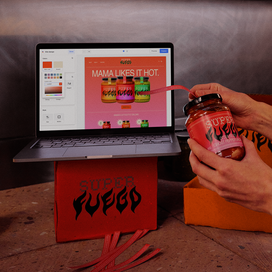This article was contributed by our friends at Forbes.
Editor’s note: “Customers were pushed online to the only available channels during the pandemic, and this altered the balance of their time and attention preference across channels to favor online more than before,” says Roshan Jhunja, GM of Square for Retail. Selling online doesn’t need to compete with your brick-and-mortar business. Instead, it can help you reach more new customers, provide more touchpoints to connect with existing customers, and create a seamless omnichannel experience, which, according to the Square Future of Retail report, is becoming more important. Learn how the Square ecosystem of tools, including Websites, can help you sell in more ways.
While the metastasization of Amazon, the global internet retailer with a market cap approaching two trillion dollars, has led many to decry that its ability to leverage technology and the internet will result in it completely taking over retailing, the reality is a bit more complicated — and good news for nimble small and medium retailers.
A study recently published by the Data Catalyst Institute found that small and medium retailers have been able to exploit technology and the internet to their benefit. A survey of 2,000 small to medium retailers were asked — among other things — how they reached their customers.
It found that most of them — including existing brick-and-mortar retailers — readily use the internet to find and retain customers, and with significant success, which has served to help small retailers continue to compete in a crowded marketplace. The obituary for the brick-and-mortar retailer needs to be put on the shelf a while longer.
Nearly 80% of the survey’s respondents reported having a brick-and-mortar retail establishment; an almost identical amount said that they do a modicum of wholesale selling as well. At a time when consumers are learning the importance of supply chains and that they may not be as robust as we have always assumed, the fact that traditional retail and wholesale services continue to play an important role is telling.
But those are far from the only methods by which small retailers reach customers. Almost 70% of respondents reported having their own web store, and 70% also said they participated in some third-party online marketplace to get sales, such as the Amazon Marketplace, Etsy, or Ebay. It is telling that Target Plus and Walmart Marketplace also saw usage of their marketplaces skyrocket during the pandemic.
Of course, none of these venues are mutually exclusive, and the typical retailer surveyed uses all of these methods — and one or two more as well, such as social media. The retailers surveyed reported that these four methods also account for the majority of revenue: Revenue from physical stores accounts for just under one-quarter of the average firm’s revenue while online marketplaces and web stores comprise 35% of all revenue.
The survey also found that 72% of these small and medium retailers get almost half of their revenue online. In other words, one way to view this is that the internet is effectively strengthening small brick-and-mortar retailers by allowing them to reach more customers with their existing infrastructure.
The results of the survey run counter to the conventional narrative that bigger is better, or that smaller firms are increasingly disadvantaged in the changing retail environment: While Amazon may be increasing sales rapidly, entrepreneurial small businesses have been able to exploit some of the same tools that Amazon uses (sometimes the very same tool — Amazon’s marketplace) to expand their sales as well, and we may want to wait before writing the epitaph for the American small business retailer.
What’s especially interesting is that even the small to medium retailers who do avail themselves of Amazon’s marketplace appear to be savvy enough to not put all their eggs in one basket with the company: The average respondent that uses the Amazon marketplace uses five or more sales methods to reach customers.
William Lewis’s trenchant 2004 book, The Power of Productivity, showed that the retail sector of the economy serves as the principal catalyst for the productivity growth of a country, which ultimately determines its standard of living. Many countries have taken extreme steps to protect their small retailers from competition in recognition of their collective political power or simply to protect what they see as a fundamental part of their country’s heritage.
The Data Catalyst Institute’s survey reveals that small to medium retailers have the ability to compete and thrive in the current retail environment, even post-pandemic, and that the internet and online marketplaces are not a threat, but an essential tool to their continued growth.
This article was written by Ike Brannon from Forbes and was legally licensed through the Industry Dive publisher network. Please direct all licensing questions to [email protected].
![]()












